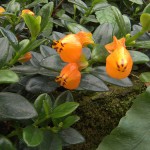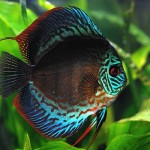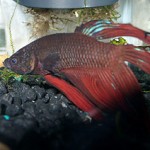Rocks: As regards water chemistry, choice of rocks is just as important as choice of substrate. Calciferous materials – limestones (including tufa), corals and shells – should be used only in marine, brackish or hard water biotopes, not the general community, especially if its water is already hard and alkaline. Otherwise use inert rocks such as granites, gneisses, mica schists, slates and millstone grit. Regard sandstones with suspicion – a lot depends on what rocks were ground down to make the constituent sand.
Think big when designing a ‘rockery’, both in terms of rock size and overall effect. Nature’s rockwork tends to be on a grand scale, and a good pile of large pieces will be more effective visually, and more of a home for the fish, than a small heap of large pebbles. Rocks can be glued together with silicone sealant or underwater epoxy resin for stability, but this has disadvantages if you want to move one piece or break down the tank!
Woodwork: There are several types of wood used in aquaria, the most usual being bogwood (hardened and preserved by long-term immersion in peat bogs), driftwood (from the seashore), and cork bark (from the cork oak. Quercus suber). All can look very effective, but each has its dangers. Bogwood and cork bark may contain – and release – tannins and brown colour. While this is fine for acid rainforest biotopes, it is not a good idea for alkaline or salt-water aquaria. Theoretically wood can be varnished to keep ‘nasties’ in; in reality it is virtually impossible to get varnish into all the crannies, and the surface may not ‘take’ it at all. Besides which, some fish like to nibble or graze on wood, and die of varnish poisoning even if the type used is safe in water. Driftwood may still contain resins, or be salt-laden, and is equally difficult to make safe.
All aquarium wood should be ‘weathered’, ideally by leaving it in a bucket of water in the garden for a few months. The process can be speeded up by boiling or soaking the wood in hot water. This may sound like a lot of effort, but a good piece of wood will be an asset for years, and is essential for simulating rainforest biotopes.
Bogwood and cork bark can be bought from aquatic retailers, cork bark is also available from florists, while driftwood you collect yourself. Empty coconut shells can make useful ‘caves’.
Never be tempted to use any old piece of wood on the basis that rivers are full of rotten, dead, semi-dead, and Coconut recently living organic material – they also contain considerably more water than your aquarium, to dilute any toxins to negligible levels.

















Leave a Reply